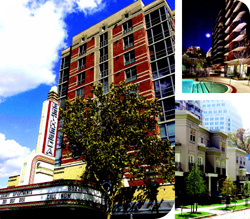Opportunities for Dealers Rather than a stumbling block, the complexity of the multifamily market offers LBM dealers a chance to participate in segments of its future.
As a greater number or renters decide to get into the for-sale market, apartment owners are apt to make improvements to facilities to recruit or retain renters or convert their projects to condominiums. “There’s a huge trend in conversions,” says Tinsley, especially because existing multifamily projects offer attractive and established locations, as well as a faster move-in schedule compared to a new high-rise for which buyers might wait two years before occupancy. “Conversions are readily available and cheaper [than new projects].”
Meanwhile, rental property owners increased spending on apartment improvements and repairs by 7.5 percent in 2003 to nearly $57 million, according Harvard University’s Joint Center for Housing Studies (see “Multi-family Resources,” page 90), after a 6 percent boost in 2002.
For both conversions and improvements, multifamily property owners seek a variety of building materials, such as upgraded windows and doors, kitchen and bath components, and low-maintenance siding and roofing.
Of course, the opportunity to help multifamily developers optimize the labor and materials efficiencies of wood construction is huge. “In some cases, using lumber is a combination of cost efficiencies and culture,” says Bozzuto. “There aren’t a lot of carpenters who’ll take responsibility for the amount of materials we need for a 250-unit job, so we’ve been building relationships and buying direct from lumberyards for 20 years.”
While the chance to supply a large-scale project with railcars of lumber and other wood-based building materials may appear attractive, developers warn that they are more demanding than their single-family counterparts are. “These guys have big buying power,” says Paley of AvalonBay’s construction operations, which takes his handoff after a project is approved to start.
Among a dealer’s other contractor customers, Paley says, “they want preferred customer status,” to avoid being delayed by materials shortages, most recently in concrete, OSB, and drywall. “They’re seeing the price increase like everyone else [for those materials],but they want them available when they need them.”
Dealers can help themselves by paying attention to the demographic, geographic, and economic indicators of multifamily growth in their markets, as well as code changes, such as sections of the International Building Code (ICC or I-codes) that enable wood-frame construction for buildings more than four stories above grade, which hot multifamily markets such as New York City recently adopted. “We build a broad range of products to capture the variety of needs and demands of the market,” says Paley. “There are opportunities for everyone to participate.” —Rich Binsacca is a contributing editor to PROSALES.



